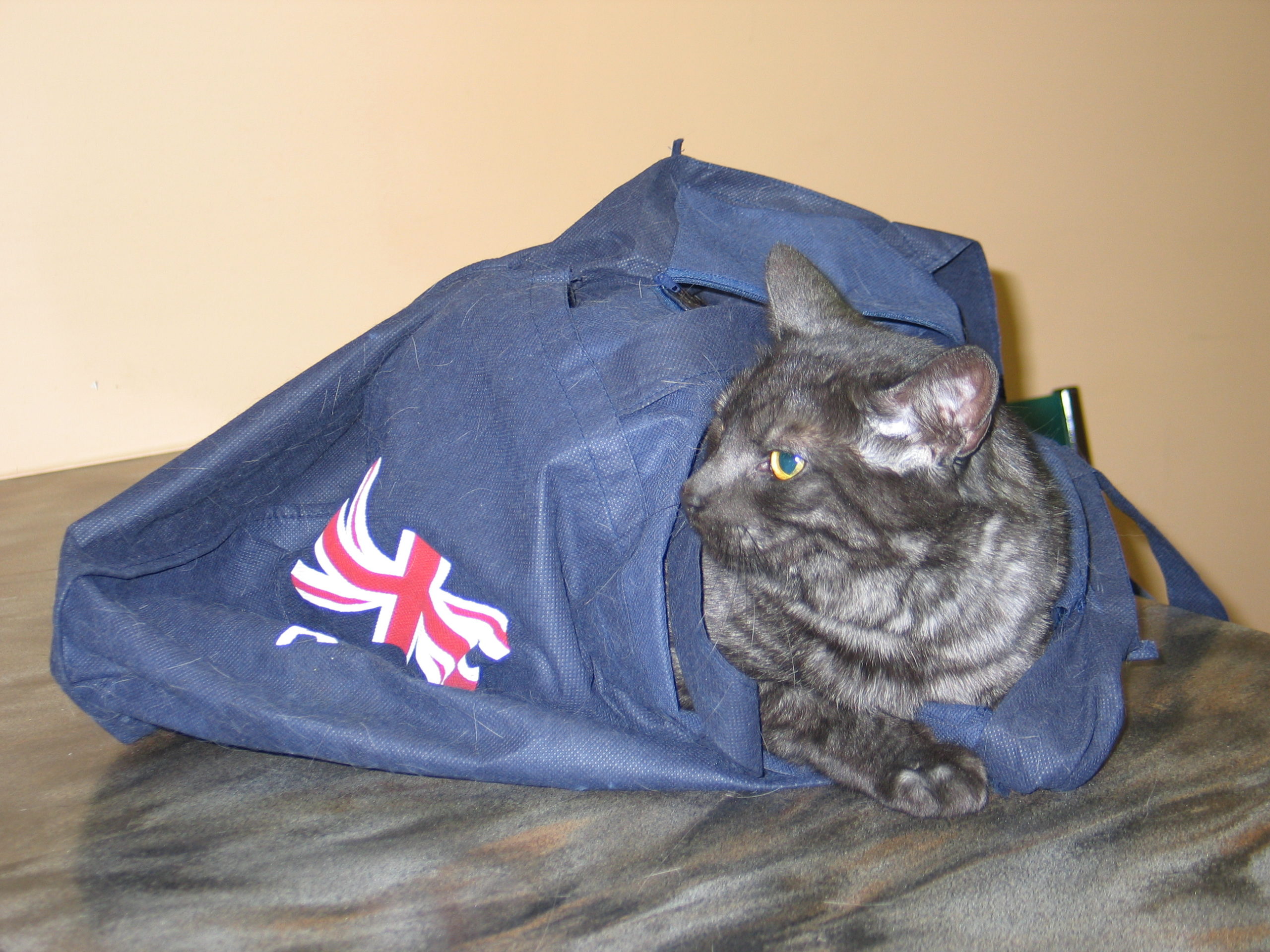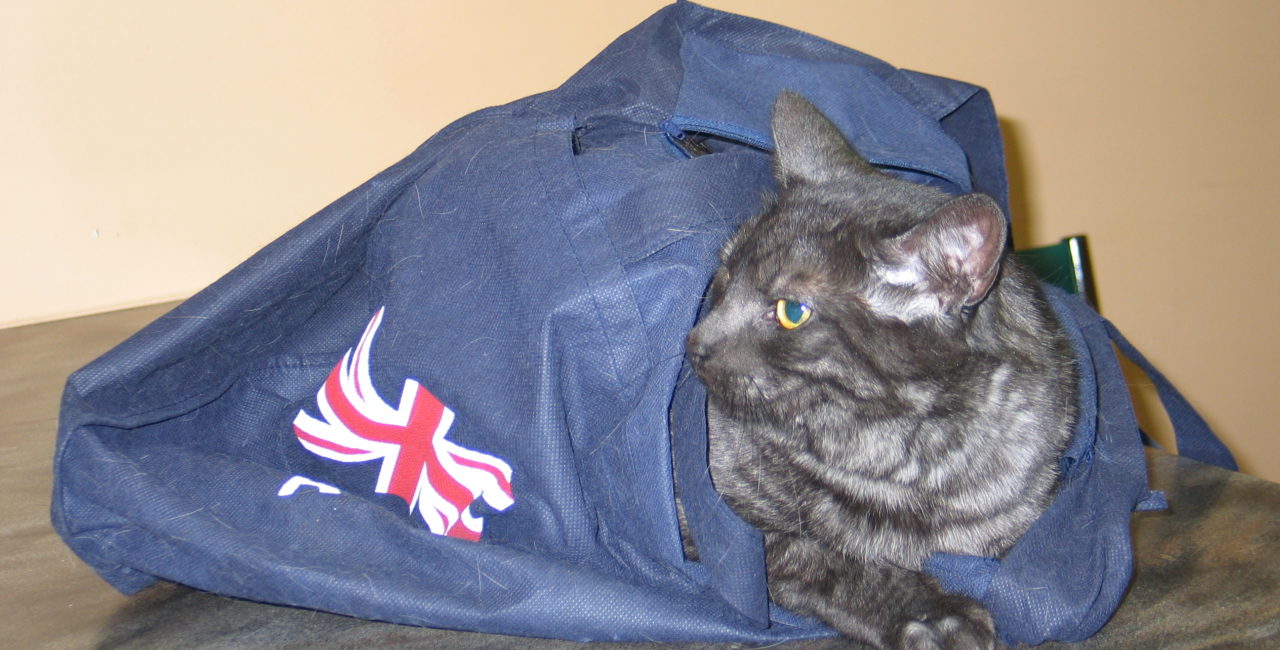Yikes, it’s the cat box again.
Smokey Armstrong doesn’t much like his cat carrier, so this year he rode to the vet clinic in a mesh shopping bag, contentedly peaking out between the handles once inside. Smokey is not alone in his hatred of the dreaded pet tote and his owners Mary and Clyde of Trenton voiced a common question, “Isn’t there an easy way to get cats into carriers?”
“Easy” there isn’t, but we can definitely make it less of an all out tooth and nail battle. It’s worth the time it takes to make kitty transportable.

Several of my colleagues tell sad stories about cats lost in housefires because they would not get into a carrier. The fields around our clinic have swallowed several terrified patients who leapt from their owners’ arms in the parking lot. And a news photographer friend has gruesome memories of being assigned to cover a car crash caused by a cat left loose in the vehicle.
For the average never-goes-anywhere-but-the-vet’s cat, the issue is fairly straight forward. She needs to be acclimatized to her carrier to make it a safe haven, instead of a terrifying trap. Cats love boxes. Take your cat carrier apart, putting away the door and lid for now. Line the bottom with some bedding, toss in a few favourite toys and leave it like that. Whenever you see kitty in the carrier, offer some stroking or treats.
Before long, you should be able to reassemble the box, open and shut the door, move the carrier around with kitty inside and maybe even take a few short car rides. The whole process can take months, so don’t rush things and take a step backwards in training if she gets too nervous. Believe it or not, some cats can be clicker-trained to go in and out of their carriers.
Okay, so back to reality. The vet appointment is tomorrow, not months away and there’s no room in the apartment to leave the carrier lying open all the time anyway.
Getting some help from gravity usually works for cats that are reluctant, but not terrified or aggressive. Place your carrier on its end with the door open at the top. Take kitty by the scruff of her neck with one hand and hold her back feet still with the other. Moving slowly, smoothly lower her into the carrier, back feet first. Please don’t report me to the vets who feel “scruffing” a cat is rude or mean. Sometimes it’s a necessary last resort. You can see the technique demonstrated here: You Tube video.
Pillow cases are secret weapon number two. I’ve seen a few shredded and their occupants escaped, so don’t rely on just the pillow case. Scoop kitty into the case, then lower it, cat and all, into the carrier which was hidden away until that moment. Triumphantly close the carrier door. When using this method, please keep in mind that claws and teeth easily penetrate pillow cases. Pillow case method video.
If you’d like more information, check the following websites, Veterinary Partner or Dr. Sophia Yin’s blog.
Dr. Fiona Gilchrist
Hillcrest Animal Hospital
March 2012




